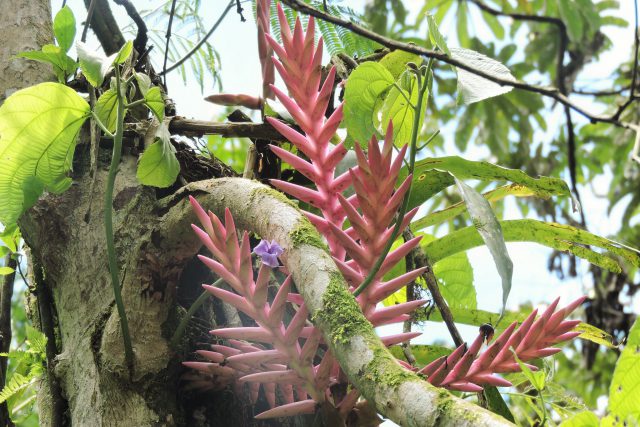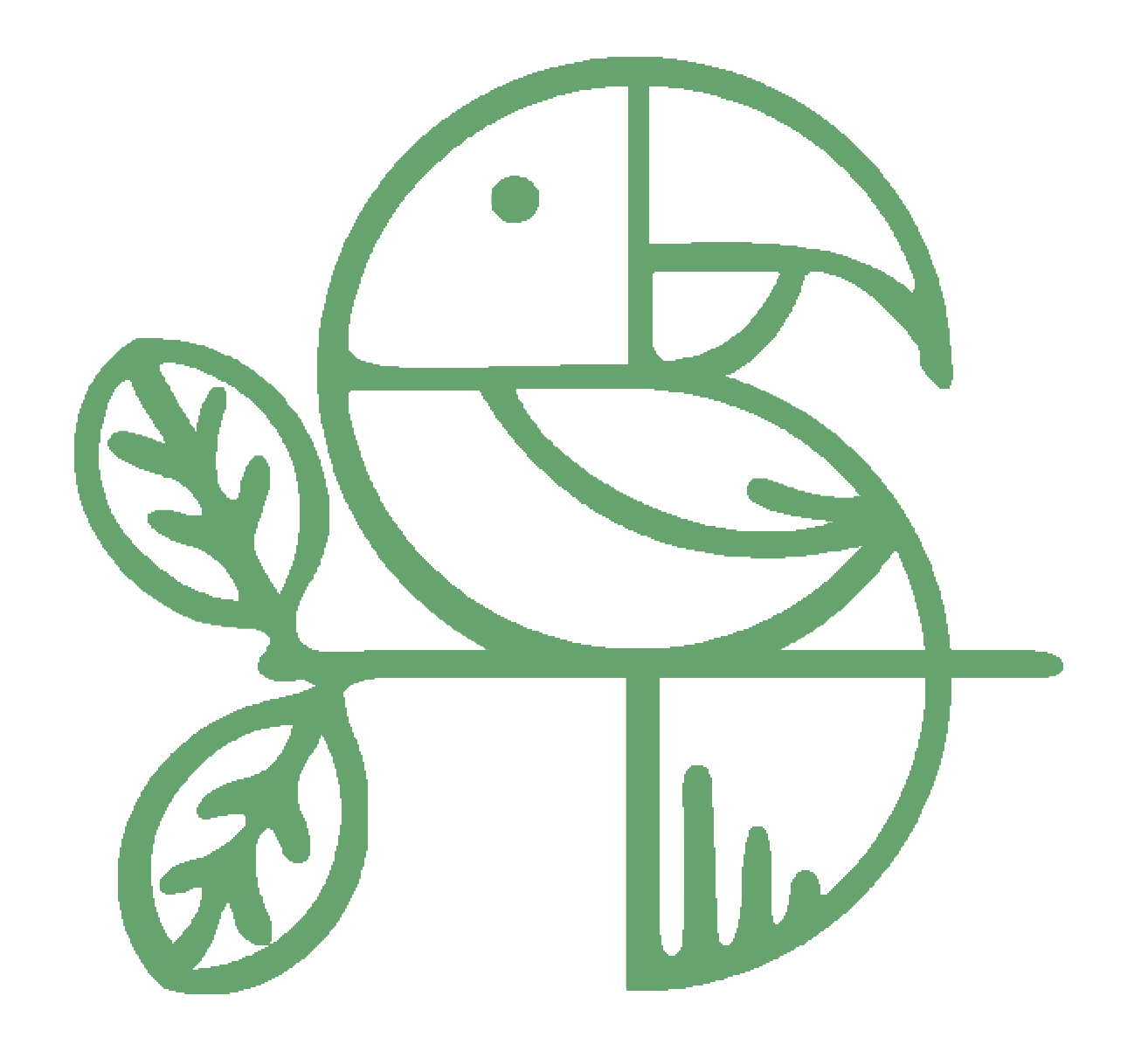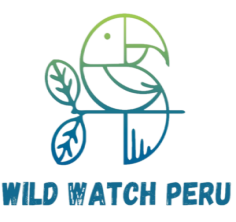Exploring Espiritu Pampa, Travel Story
I share this story after learning of the sad disappearance of a great fish researcher in Colombia, of the tragic day when his vessel was shipwrecked on one of the tributaries of the Amazon River. Of all the passengers who managed to reach the shore, only Javier A. Maldonado was missing.
With mixed emotions, I’ve just read some of his writing. I didn’t know anything about him before, and as I explore each line of his writing I begin to idealize who he was his philosophy. It’s incredible to see how much knowledge was wrapped up in this man and his desire to pass it on in such a simple way, both inside and outside the classroom, summarizing his experiences in something as intense as his passion for freshwater fish.
I never had the opportunity to shake his hand. Unfortunately, I don’t think it would have ever happened, as we were in different worlds: he was after fish. He could be found in the water and sometimes in classrooms teaching, while our territory is birds. But I knew that we would have agreed on one thing: the desire to explore.
In short, we reaffirm the great truth of which we are all aware, and which we cannot ignore. Our time on this earth is fleeting and we must enjoy what we do as if it were the last time.
The trajectory of Javier A. Maldonado, just like Elías León (Inkaterra guide) and many others who have given everything to follow their ideals and dreams, now leaves a legacy that will transcend those physical boundaries with absolute freedom.
Coming back to the point of this post and focusing on the experience of this “reflective journey” to the ruins of Espiritu Pampa in the Vilcabamba Valley (known as the last stronghold of the Inca resistance to the arrival of the Spaniards), I agree with what was once mentioned by José Álvarez Alonso (ornithologist who studied the Iquitos gnatcatcher): Birdwatching should not be limited to simply obtaining the best and highest number of sightings. Perhaps it should be something more interesting and human than that: it’s also about looking around.
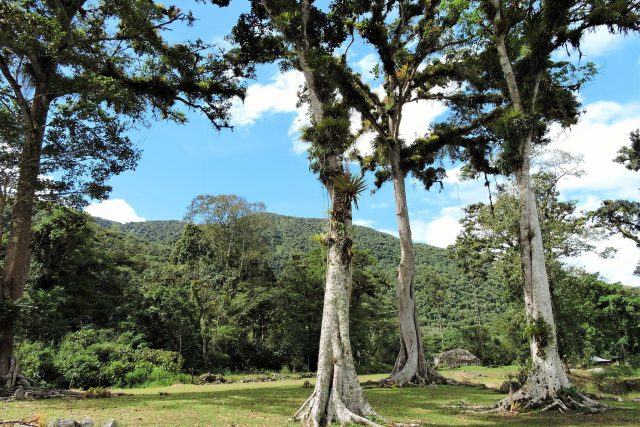
Birdwatchers, or “pajareros”
As we are called, fit the archetype of insatiable walkers, those who feel the joy in touching “reality,” approaching and perceiving it with greater sensitivity than any campaigning politician. Few have the privilege of being immersed in the roots of the country even knowing that this involves a dose of physical risk, but not emotional.
Attesting to the distances that still separate us from those deep Peruvian towns, dubbed “the corners of the country” which remain secluded in physical space and in memory.
Life there is most simple and precarious—towns where the most economic movement seems to happen only when they receive funds from the government for reasons of extreme poverty or retirement pensions. And the Wednesday fairs offer opportunities to sell one’s products (coffee, cocoa, bananas, chickens).
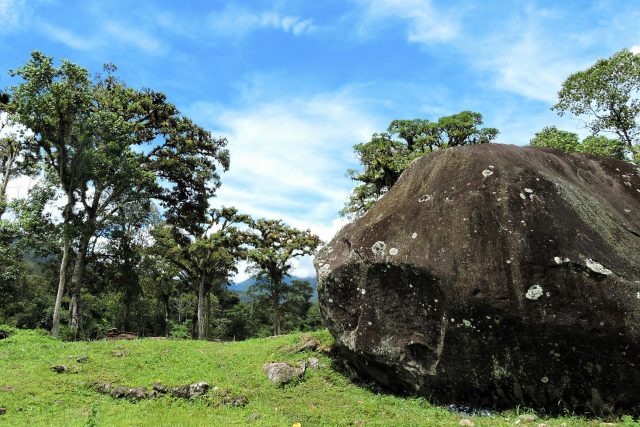
It’s hard to say how many soles fill their pockets so that they have their necessities and can go to Kiteni, the populated center, for supplies. The trip there by bus involves 3 hours of winding trails through the mountainsides between streams and many agricultural plantations.
The villagers clamor for their long-awaited connection with Vilcabamba to complete the stretch of road—the trip to Cusco or Quillabamba would be much shorter. In conversations, they tell us it’s only a matter of waiting a bit longer, that the road work is being executed and will be completed with the construction of a pair of bridges at the top—of course depending on the politicians of the moment. I like to be optimistic in these circumstances and even more so while in these parts.
Interesting Birds and landscapes
As part of our birding routine, we had made many stops on this route, from Kiteni to Espíritu Pampa, logging sightings for the eBird database and our own personal records. Of course, the bird calls emerged from the forest constantly; almost all were colorful birds and made us pause, the frequent songs cutting across the valleys. There the vegetation was dense with cecropias, fabáceae, miconias, attracting many species of tanagers, flycatchers, dacnises, and more.
It’s the forest fringes where many creeks originate and flow into the main river channel, and the villagers here know that keeping the vegetation of those beds intact prevents landslides that would devastate their only access road.
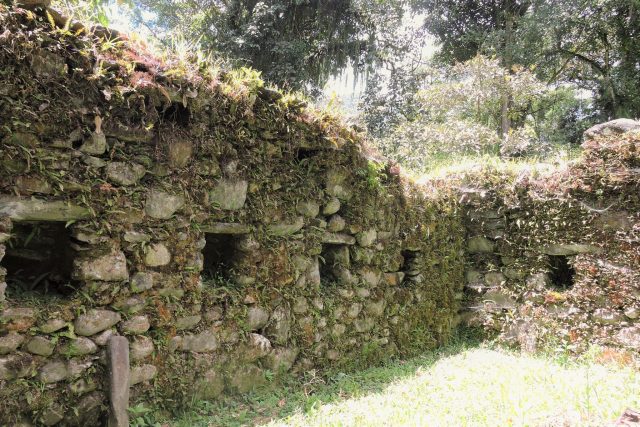
People along the route!
We had a feeling we were not alone on the route. Around half-way, we picked up an elder woman carrying one of those 5-gallon buckets full of fresh chicken from her farm, destined for the upcoming settlements.
Arriving at Chontabamba, we bid farewell with the firm commitment that if she didn’t sell all of her merchandise, we would purchase the rest, each ready-to-cook hen costing only 20 soles, the roosters 25 soles.
We stayed for a day in the village of Chontabamba, located in the lower part of the archaeological complex. There are no official tourist facilities but the family who welcomed us there had improvised some of their bedrooms so that we could spend the night. It was one of few houses with a second floor and balcony and had more of an air of being the only restaurant in town. During our short stay, we saw that it also functioned as a barbershop.
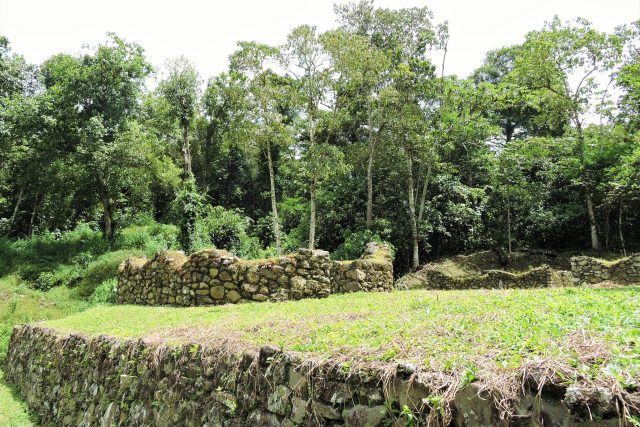
Occasionally we were able to chat with community members and realized that there was no hint of hostility in any encounter, though we were being conscious on the subject of safety.
We knew that the image of the place had been painted as risky or red-zone due to subversive matters related to Vraem. But to the contrary, people were very kind and respectful. They confirmed that in the month of February they’d never expect to see a single tourist; the first adventurers typically arrive in April. In any case, we felt even more privileged.
The people are very busy as they go about their daily work. If you ask for information, with ease they point you to the locations of the ruins and the trails to take. They are very proud of their history, although they don’t know in-depth the significance and the enigma hidden in the ruins and the complex biology that envelops the forests. Knowing that Antonio Raimondi set foot on these lands around the 20th century, he must have been more than astonished.
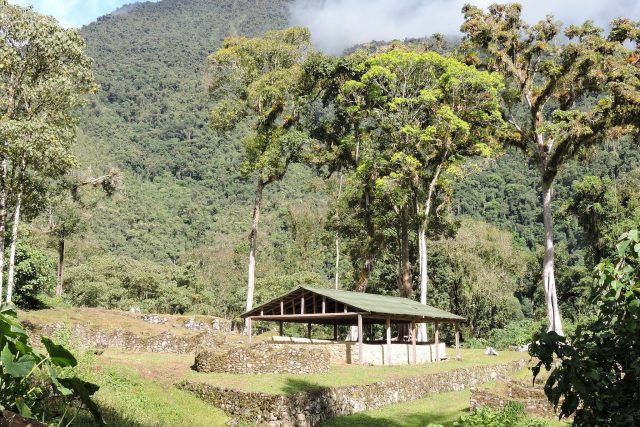
Old trees and ruins
The gigantic ficus trees that have wound their roots around the ancestral constructions lend them a touch of magic, something unique to this place.
Once at Espiritu Pampa, it was an exciting morning that we had to make the most of, the sounds traveling everywhere. The mixture is such that you’ll find birds and even monkeys of lower elevations, common lowland species even though the complex is situated at 1500 meters surrounded by a humid subtropical forest with the characteristics of a cloud forest.
We observed different bird species that congregate in typically mixed flocks, warblers that were not frequently found on our habitual route, and some solitary birds of the undergrowth such as Slaty Gnateater, which up until then I had only seen in books. Today we remember each instant with the same satisfaction of managing to see a Lifer in a place to which hardly anyone goes with that purpose.
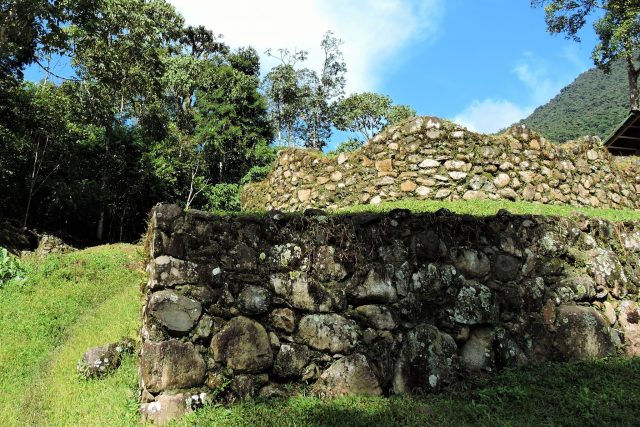
About Espiritu Pampa
There are few places where you can really connect with the environment, surrounded by ruins and nature while absorbing the historical significance. Once we arrived at Espíritu Pampa we were received by the staff of the Ministry of Culture where they presented us with the following points:
- The research and findings in Espiritu Pampa have led to a turning point in the study of Peruvian history. The important discovery of the tomb of theLord of Vilcabamba or Wari in February 2011, as well as the archaeological constructions of apparent hierarchy, revealed the occupation of a pre-Inca culture (Wari) that had overlapped harmoniously.
- Espiritu Pampa is an archaeological complex of great cultural value where the Lord of Vilcabamba-Wari was found, changing the chronology of the development of this culture. The Wari arrived at the lowlands of Antisuyu, an area that was also occupied by the Incas, superimposing their knowledge and wisdom in this impenetrable shell of a region that served as the last refuge during the Inca resistance against the Spanish Invasion (1536-1576).
The touristic potential of the archaeological complex at Espiritu Pampa and diversity is evident and promising. Let’s hope the conditions for generating sustainable tourism are the most favorable, thus providing relief to the economy and finally, the local community can become the protagonists!
We created the location for the Ebird database with the name Zona Arqueológica de Espiritupampa. We have registered around 170 birds including some sightings that were made on the way from Yuveni to Chontabamba.
Of course, we will return!
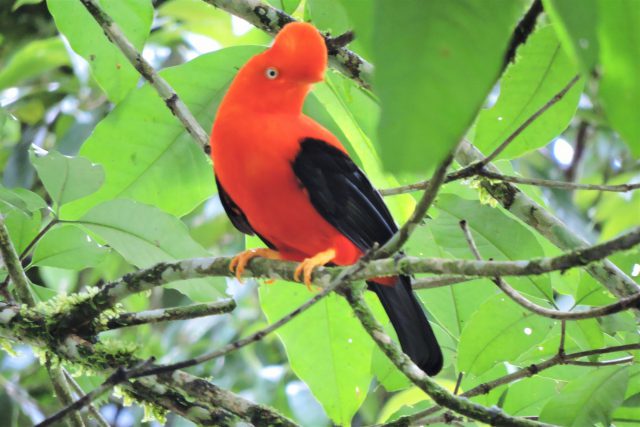
Our Espiritu Pampa Tour departed from Cusco in the direction of Calca – Lares – Quebrada Honda – Quellouno, turning off onto the Cháhuares bridge, then Palma Real – Kiteni – Yuveni – Chontabamba and Espiritu Pampa.
The return trip from Espiritu Pampa went in reverse from the section of Espiritu Pampa – Yuveni – Kiteni and the turnoff to the Cháhuares bridge, from there we took the route toward Echarate – Quillabamba and went up toward Abra Malaga and down to the Sacred Valley – Cusco.
Duration: 4 days.
Photo credits: Paulina Conde, Symond Pinares
The content of this post is solely the responsibility of the author; the opinions and comments shared are personal points of view.
